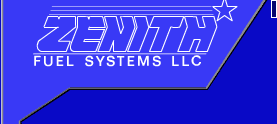

| Operations
Details
The liquid fuel is admitted at the fuel inlet port and passes through the heat exchanger coil where the fuel absorbs heat from the engine cooling system before it reaches the regulator pressure valve. As long as the engine is running and the pressure at the outlet side of the regulator is slightly less than 10 psi, the valve remains partially open to admit fuel through the vaporizer-regulator to the final stage regulator and carburetor. With the engine shut off, the pressure below the regulator diaphragm increases to 10 psi in the fuel chamber. The increase in pressure against the lower side of the diaphragm compresses the diaphragm spring and lifts the diaphragm to permit the valve spring to close the valve and cut off the supply of LP fuel at the valve. The inlet valve remains closed as long as the pressure on the lower side of the diaphragm remains at 10 psi. A drop in pressure at the vaporizer-regulator fuel outlet lowers the pressure in the chamber below the diaphragm to permit the diaphragm springs and atmospheric pressure to reopen the inlet valve and allow more fuel from the fuel tank to enter the vaporizer and regulator. As soon as the pressure on the lower side of the diaphragm again reaches 10 psi, the fuel inlet valve again closes to shut off the fuel supply. The vaporizer-regulator automatically maintains a 10 psi pressure on the fuel supplied to the system even though the fuel tank pressure and fuel demands may vary widely.
|
Copyright
© 2000-2011 Zenith Fuel Systems LLC. All rights reserved.